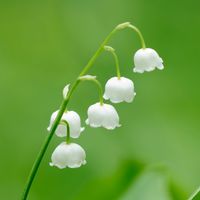Black Bamboo Info: Tips On Growing Black Bamboo
While beautiful, black bamboo is of the "running" variety. Plan ahead before you plant this fast grower, and expect it to spread rapidly. You may want to keep it as a pretty container plant.

Caroline Bloomfield

Bamboo holds the world record for being the fastest growing plant. This is welcome news for the impatient gardeners among us – or is it?
While bamboo provides the instant gratification of being a fast grower, some varieties of bamboo can become very invasive and grow out of control.
Is black bamboo invasive? Read on for the answer and learn how to care for black bamboo plants in the garden.
Is Black Bamboo Invasive?
There are several varieties of bamboo with black culms (stems) and over 1,200 species of bamboo in general. Phyllostachys nigra, or "black bamboo," has the potential to be very invasive.
This Chinese native is classified as a running bamboo, meaning it spreads quickly by underground rhizomes. However, with some foreknowledge about black bamboo you can learn how to minimize its invasiveness.
How to Care for Black Bamboo Plants
Uses For Black Bamboo
Running bamboo types, such as black bamboo plants, are ideal for creating a dense hedge or privacy screen. Your plants should be placed 3 to 5 feet (1-1.5 m.) apart for this purpose. However, you will probably only want to consider growing black bamboo if you have a very sizable area for it spread out.
If all of this seems too daunting or if you have minimal garden space, then remember this black bamboo information: black bamboo, like other types, can also be enjoyed as a container plant.
Sign up for the Gardening Know How newsletter today and receive a free copy of our e-book "How to Grow Delicious Tomatoes".
Controlling Black Bamboo
There are many strategies you could employ to contain the size of a bamboo grove, such as root pruning or even a root barrier. If you're opting for a root barrier, install the barrier at least 36 inches (91 cm) deep between the bamboo grove and the rest of your property. Use materials in the trench that are impenetrable, such as rolls of fiberglass or 60 mil polypropylene. The barrier itself should protrude 2 inches (5 cm) above the ground to discourage any wayward rhizomes.
How to Grow Black Bamboo
Black bamboo's highly ornamental culms transition from green to ebony black by the third year of growth. Therefore, some patience is required to witness this bamboo in its full black splendor.
Planting Zone Black bamboo is also regarded as being the hardiest of all the bamboo species with a USDA zone rating of 7 to 11. In terms of size, black bamboo is capable of reaching heights of 30 feet (9 m) with the girth of its culms being at least 2 inches (5 cm).
Light The leaves of black bamboo are evergreen, bright green, and lanceolate in shape. Black bamboo can grow under varying light conditions, from full sun to partial shade.
Water Black bamboo plantings should be watered regularly until they are established. Consider adding mulch around the base of your bamboo plants to retain moisture.
Soil Black bamboo prefers soil that is characteristically moist and loamy with a soil pH ranging from highly acidic to slightly alkaline.
Fertilizer Fertilizing is not mandatory for growing black bamboo, but you can opt to do so in mid to late spring with a fertilizer high in nitrogen.

Shelley Pierce was a writer for Gardening Know How, contributing to hundreds of articles for the site.
- Caroline BloomfieldManager of Marketing Communications